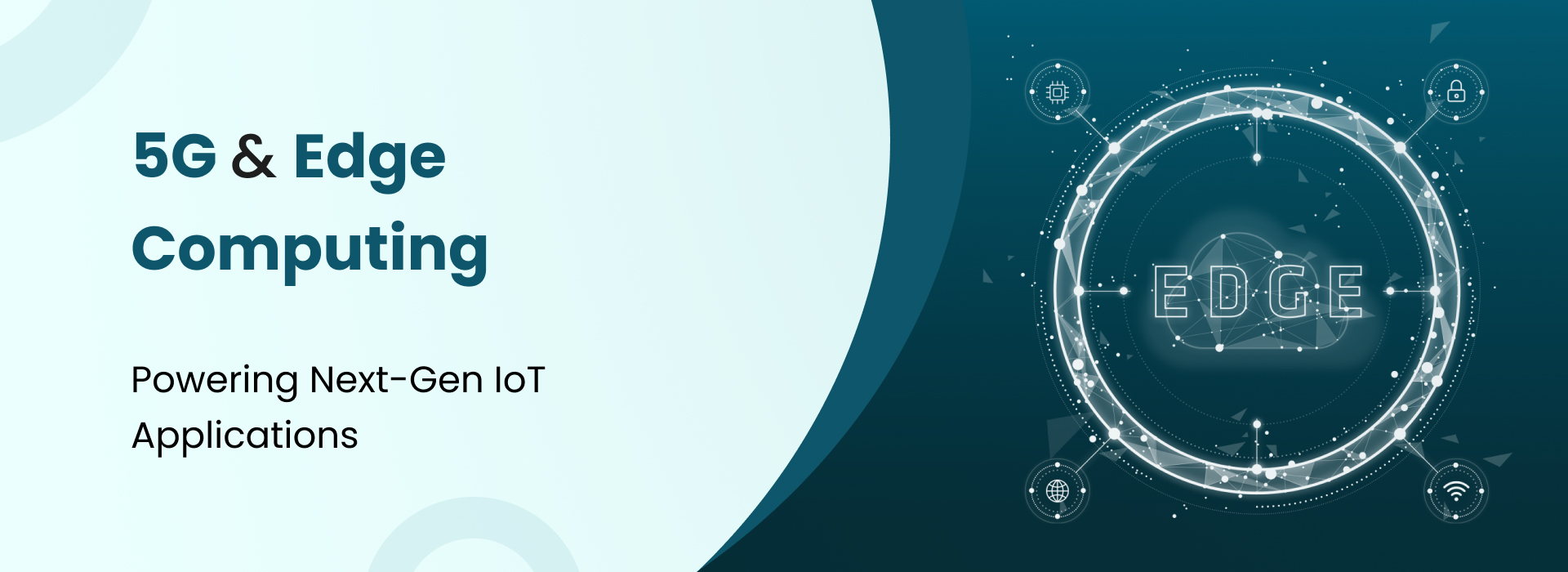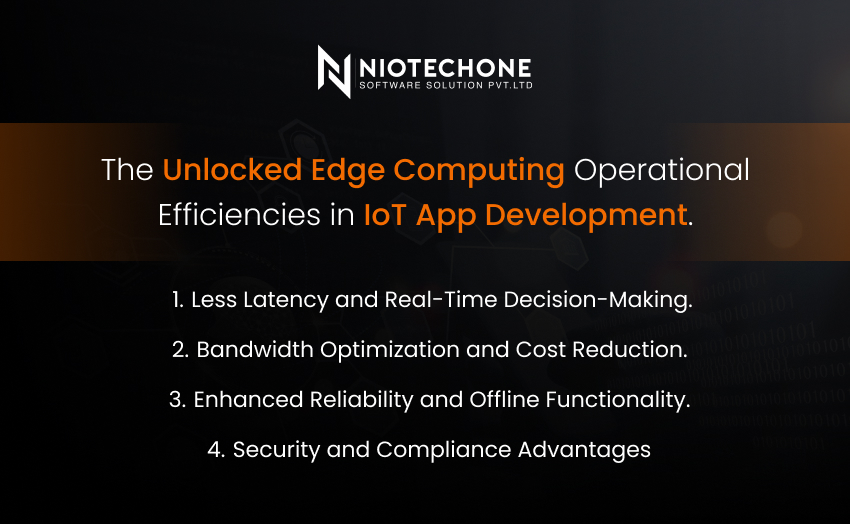1. Less Latency and Real-Time Decision-Making.
Edge computing greatly reduces latency by computing data nearer to its origin, be it on IoT devices, on local servers, or on edge nodes. In high-stakes systems such as autonomous vehicles, industrial robotics, and smart manufacturing, the difference between safe operation and expensive errors can be a reduction of round-trip data transmission to centralised clouds by seconds or milliseconds. As an example, autonomous vehicles are based on split-second decisions to drive in changing environments, and they need to analyze sensor data in real-time. In the same way, augmented reality (AR) maintenance systems in factories superimpose real-time diagnostics on equipment, allowing technicians to fix problems in real-time without delays in operations.
Niotechone incorporates edge computing solutions in IoT app development services to provide real-time decision-making and operational efficiency in businesses in various sectors. Our IoT edge solutions make remote and challenging environments more responsive by minimizing reliance on remote cloud servers. Offshore energy, agriculture, and disaster response industries use edge nodes to keep their industries operational despite having low connectivity.
2. Bandwidth Optimization and Cost Reduction
Conventional cloud-based IoT designs overload network capacity by sending huge amounts of raw data to centralised servers. IoT Edge computing reduces this load by filtering, compressing, and analyzing data on the edge. As an example, smart factories can process video feeds of quality control cameras at the edge and only send anomalies to the cloud. This saves up to 60 percent of bandwidth, lowers operational expenses and avoids network congestion.
Saving costs is not limited to bandwidth efficiency. Local processing of only necessary data saves organisations costs related to cloud storage and hyperscale cloud services. An example of this is retailers processing in-store customer behaviour data on-site using edge analytics instead of paying a subscription to a cloud provider to get non-critical insights. Niotechone edge computing services assist businesses in optimizing network performance and operational costs and offer a cost-effective and scalable solution to the modern business.
3. Enhanced Reliability and Offline Functionality
The reliability is also enhanced by decentralising data processing with edge computing, as it minimises the reliance on a single point of failure. In case of network connectivity failure, edge devices will keep running independently. This feature is essential to applications such as telemedicine, where wearable devices can monitor patient vitals and send alerts without using cloud servers. Likewise, smart grids use edge controllers to control energy delivery when the internet is unavailable to avoid cascading failures.
Intermittently connected industries, like maritime logistics, mining, or remote manufacturing, are well served by edge systems that store and synchronise data locally to the cloud when connections are reestablished. Niotechone IoT edge solutions ensure continuous performance, data protection, and operational stability of businesses even when they are in remote areas.
4. Security and Compliance Advantages
Although spreading computation to devices can increase the attack surface, edge computing enhances security by maintaining sensitive data locally. An example is that healthcare providers can process patient records on hospital edge servers instead of sending them to third-party cloud providers, which is in line with stringent regulations such as HIPAA.
Using the secure edge computing services of Niotechone, businesses can now comfortably implement the IoT solutions, as they are guaranteed of compliance, minimized risks, and protection of vital business and customer information without compromising on performance and operational efficiency.













